#Sustainability •
Explore tagged Tumblr posts
Text
Here's the top 2 stories from each of Fix The News's six categories:
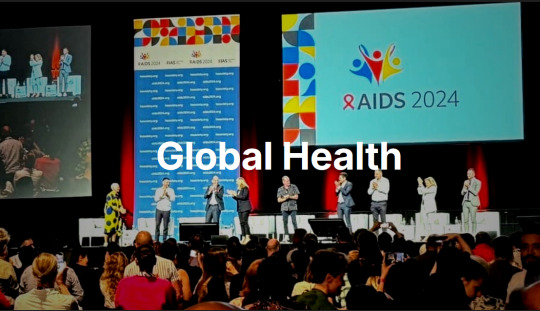
1. A game-changing HIV drug was the biggest story of 2024
In what Science called the 'breakthrough of the year', researchers revealed in June that a twice-yearly drug called lenacapavir reduced HIV infections in a trial in Africa to zero—an astonishing 100% efficacy, and the closest thing to a vaccine in four decades of research. Things moved quick; by October, the maker of the drug, Gilead, had agreed to produce an affordable version for 120 resource-limited countries, and by December trials were underway for a version that could prevent infection with just a single shot per year. 'I got cold shivers. After all our years of sadness, particularly over vaccines, this truly is surreal.'
2. Another incredible year for disease elimination
Jordan became the first country to eliminate leprosy, Chad eliminated sleeping sickness, Guinea eliminated maternal and neonatal tetanus, Belize, Jamaica, and Saint Vincent & the Grenadines eliminated mother-to-child transmission of HIV and syphilis, India achieved the WHO target for eliminating black fever, India, Viet Nam and Pakistan eliminated trachoma, the world’s leading infectious cause of blindness, and Brazil and Timor Leste eliminated elephantiasis.
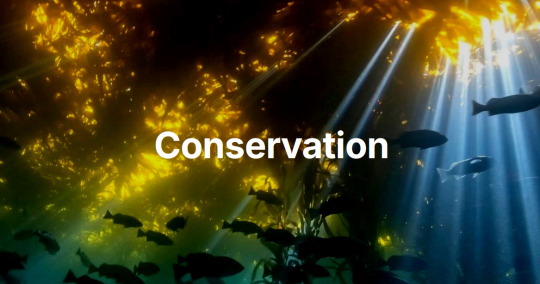
1. The EU passed a landmark nature restoration law
When countries pass environmental legislation, it’s big news; when an entire continent mandates the protection of nature, it signals a profound shift. Under the new law, which passed on a knife-edge vote in June 2024, all 27 member states are legally required to restore at least 20% of land and sea by 2030, and degraded ecosystems by 2050. This is one of the world’s most ambitious pieces of legislation and it didn’t come easy; but the payoff will be huge - from tackling biodiversity loss and climate change to enhancing food security.
2. Deforestation in the Amazon halved in two years
Brazil’s space agency, INPE, confirmed a second consecutive year of declining deforestation in the Brazilian Amazon. That means deforestation rates have roughly halved under Lula, and are now approaching all time lows. In Colombia, deforestation dropped by 36%, hitting a 23-year low. Bolivia created four new protected areas, a huge new new state park was created in Pará to protect some of the oldest and tallest tree species in the tropical Americas and a new study revealed that more of the Amazon is protected than we originally thought, with 62.4% of the rainforest now under some form of conservation management.
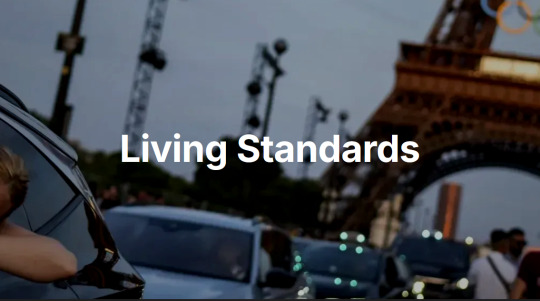
1. Millions more children got an education
Staggering statistics incoming: between 2000 and 2023, the number of children and adolescents not attending school fell by nearly 40%, and Eastern and Southern Africa, achieved gender parity in primary education, with 25 million more girls are enrolled in primary school today than in the early 2000s. Since 2015, an additional 110 million children have entered school worldwide, and 40 million more young people are completing secondary school.
2. We fed around a quarter of the world's kids at school
Around 480 million students are now getting fed at school, up from 319 million before the pandemic, and 104 countries have joined a global coalition to promote school meals, School feeding policies are now in place in 48 countries in Africa, and this year Nigeria announced plans to expand school meals to 20 million children by 2025, Kenya committed to expanding its program from two million to ten million children by the end of the decade, and Indonesia pledged to provide lunches to all 78 million of its students, in what will be the world's largest free school meals program.
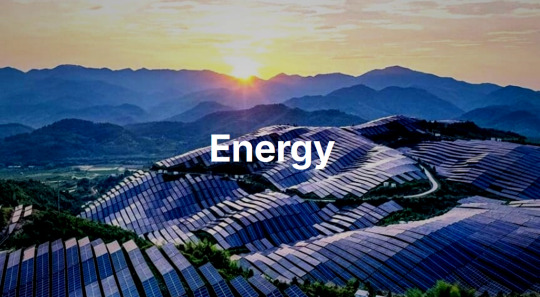
1. Solar installations shattered all records
Global solar installations look set to reach an unprecedented 660GW in 2024, up 50% from 2023's previous record. The pace of deployment has become almost unfathomable - in 2010, it took a month to install a gigawatt, by 2016, a week, and in 2024, just 12 hours. Solar has become not just the cheapest form of new electricity in history, but the fastest-growing energy technology ever deployed, and the International Energy Agency said that the pace of deployment is now ahead of the trajectory required for net zero by 2050.
2. Battery storage transformed the economics of renewables
Global battery storage capacity surged 76% in 2024, making investments in solar and wind energy much more attractive, and vice-versa. As with solar, the pace of change stunned even the most cynical observers. Price wars between the big Chinese manufacturers pushed battery costs to record lows, and global battery manufacturing capacity increased by 42%, setting the stage for future growth in both grid storage and electric vehicles - crucial for the clean flexibility required by a renewables-dominated electricity system. The world's first large-scale grid battery installation only went online seven years ago; by next year, global battery storage capacity will exceed that of pumped hydro.
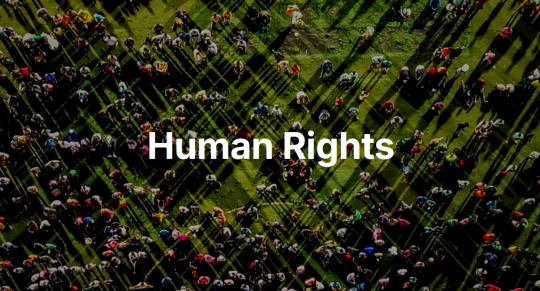
1. Democracy proved remarkably resilient in a record year of elections
More than two billion people went to the polls this year, and democracy fared far better than most people expected, with solid voter turnout, limited election manipulation, and evidence of incumbent governments being tamed. It wasn't all good news, but Indonesia saw the world's biggest one day election, Indian voters rejected authoritarianism, South Korea's democratic institutions did the same, Bangladesh promised free and fair elections following a 'people's victory', Senegal, Sri Lanka and Botswana saw peaceful transfers of power to new leaders after decades of single party rule, and Syria saw the end of one of the world's most horrific authoritarian regimes.
2. Global leaders committed to ending violence against children
In early November, while the eyes of the world were on the US election, an event took place that may prove to be a far more consequential for humanity. Five countries pledged to end corporal punishment in all settings, two more pledged to end it in schools, and another 12, including Bangladesh and Nigeria, accepted recommendations earlier in the year to end corporal punishment of children in all settings. In total, in 2024 more than 100 countries made some kind of commitment to ending violence against children. Together, these countries are home to hundreds of millions of children, with the WHO calling the move a 'fundamental shift.'

1. Space exploration hit new milestones
NASA’s Europa Clipper began a 2.9 billion kilometre voyage to Jupiter to investigate a moon that may have conditions for life; astronomers identified an ice world with a possible atmosphere in the habitable zone; and the James Webb Telescope found the farthest known galaxy. Closer to Earth, China landed on the far side of the moon, the Polaris Dawn crew made a historic trip to orbit, and Starship moved closer to operational use – and maybe one day, to travel to Mars.
2. Next-generation materials advanced
A mind-boggling year for material science. Artificial intelligence helped identify a solid-state electrolyte that could slash lithium use in batteries by 70%, and an Apple supplier announced a battery material that can deliver around 100 times better energy density. Researchers created an insulating synthetic sapphire material 1.25 nanometers thick, plus the world’s thinnest lens, just three atoms across. The world’s first functioning graphene-based semiconductor was unveiled (the long-awaited ‘wonder material’ may finally be coming of age!) and a team at Berkeley invented a fluffy yellow powder that could be a game changer for removing carbon from the atmosphere.
-via Fix The News, December 19, 2024
#2024#good news#hope#hope posting#hopeposting#hopepunk#conservation#sustainability#public health#energy#quality of life#human rights#science and technology
2K notes
·
View notes
Text
We can encourage this as consumers by making deliberate choices with our purchases - it starts not just with "can I reuse the packaging?" but also "can i support more sustainable packaging materials that aren't designed to go straight to the landfill?" If people stop choosing them, companies will switch gears.
By which I mean, where you are able and can afford to do so,
-LET GO OF BRAND LOYALTY. It's fine to have favorites, but be willing to try things out when you find something promising -avoid buying things that are sold shrinkwrapped -Buy the TP and other paper goods that come in paper packaging instead of plastic wrap. Use the paper to wrap gifts - you can draw or paint on the paper to change the appearance if you want. -if you want to buy pretty giftwrap, look for paper that is fully recyclable/biodegradeable - a lot of gift wrap has plastic, foil, or glitter that makes it landfill-destined. -new clothing is shipped in single-use plastic, individually wrapped before it ever lands on the rack - thanks fast fashion :) if possible, look into brands that are working to reduce their use of plastic, or buy second-hand. So much new clothing is such poor quality it falls apart in 3-4 washes anyways. -paper egg cartons can be used to plant seedlings, and I also shred them up to go in compost as brown waste. Avoid styrofoam or plastic egg cartons. -if you like to camp or picnic, use cardboard milk cartons to freeze blocks of ice for your cooler rather than buying bags of ice cubes (they also last longer that way, and filling the empty spaces in your freezer with ice makes it more energy efficient - less space for warm air) -opt for paper bags over plastic whenever given the option -Make/acquire reusable shopping bags that are washable fabrics like canvas - opt for the thickest & sturdiest you can find! -If possible, look for locally grown/made & sold - shipping long distances means more packaging in transit -we try not to buy soda in plastic bottles either - glass or cans are preferable! it's more expensive, but between cutting back on how much soda we drink and the difference in plastic waste (plus glass bottled sodas tend to be the better quality brands) we figure the exchange is worth it. -Buy food/candles/etc. that comes in glass jars rather than plastic (pro-tip: look for thicker glass, esp. on the bottom - it's less easy to break) Select jarred/bottled goods that have good/interesting shapes and sizes. I use them for things like vases, decor, organizers, etc. I use old herb jars to start plant cuttings in water, and my favorite mini-vase is an old saltshaker i got from my bff when he was moving! -if you are crafty, learn how to safely cut glass - it will open up new options for what you can do with glass bottles and jars -a lot of new sheet sets come with drawstring bags made from the same material - I like using the sheet bags as laundry bags when I travel, but they could also work for produce shopping bags instead of the plastic film ones the grocery store provides
Generally I prefer to avoid plastic as much as possible, but currently this is difficult. So for now, I try to make use of it as long as I can - lunch meat boxes as tupperware, jars for storage, misc plastic for crafting supplies - any way i can keep it out of the landfill and the environment. I'm looking into eco-brick making but I don't know much about it yet and I'm leery of potential leeching into soil and groundwater. If anyone else has sources to learn more, I'd appreciate a share!
And finally, and this is important if we want to see change from the source, send feedback to companies! Look for their website and send them an email, a phonecall, even a letter. If they have better and more sustainable packaging, tell them you approve and appreciate the attention to detail so that they know it's noticed by consumers. If you have problems with it (like that it's flimsy, or made of plastic, etc) tell them that you are disappointed, or that you will be looking for alternative options. ASK THEM to consider switching to non-plastic options.
If customer en masse start buying from the other guy, companies will start looking at what the other guy is doing that customers like better. If lots of the customers start saying hey, we love the shape of the jar you use, the company is less likely to change it because now they know it's a selling point. Send them pictures of the kinds of things that you're doing with the packaging. Post those pictures on social media. Share other people's creative projects and uses. If companies see that people are interested in these things, it becomes a marketing avenue for them - yes we wanna be suspicious of greenwashing, but we can still use their goals to help push them to change.
Ethical consumption under capitalism is impossible, but we do the best we can. And one more great way to start is to learn patience in your spending and acquisition of goods - are you buying something because it works in a pinch and you want it fast? Is it something that you can wait to buy the thing that exactly suits your needs rather than suffices for now?
You know how companies used to make flour sacks with pretty flower patterns on them because mothers would make dresses out of them for their daughters? We should bring that back. Paper bags designed to be reused as wrapping paper. Jars of jam designed to look nice filled with pencils or homemade sauces. Fabric that's high quality enough to use as a patch.
Give things a second life!!
35K notes
·
View notes
Text
From the article:
For Brother Xavier Boutiot, treasurer of a Benedictine abbeyin central France, pulling the abbey's investments from fossil fuels was an obvious step. Committed to the “Green Church” initiative for four years, the Olivetan monks aimed for consistency in all aspects of their community life. “Financial investments have an ecological impact that is 25 times greater than our daily actions!” emphasized the treasurer. To embark on this ecological and financial transition, the abbey had to scrutinize its investments, which was not straightforward. “The financial world is so opaque for basic investors like us, who don’t have access to all the information,” explained Boutiot. “We called our banks that were not on board with this direction, explained our reasoning, and applied some pressure by saying, ‘Either you support us in this approach, or we’ll switch banks.’” [...] The reasons to divest from fossil fuels are not only ethical but financial: the International Energy Agency predicts fossil fuel use will peak before 2030 and then decline. Religious institutions, managing $3 trillion globally, have divested from fossil fuel companies more than any other sector, aligning their investments with their values.
#divestment#finances#global warming#climate change#climate anxiety#good news#hope#sustainability#environment#ecoanxiety#christianity cw#religion cw#divest
153 notes
·
View notes
Text

Mending my work jeans. Every once in a while, I decide to be ridiculously stubborn about something, and right now, mending these jeans is it. I got them thrifted for a dollar, had to add in extra fabric so they’d fit, and now they’re wearing thin in a few areas. But I love them enough that I’m going to keep mending them until they fall apart
#solarpunk fashion#solarpunk#mending#fibre arts#fiber art#darning#sustainability#sustainablefashion#sustainable fashion#art
22 notes
·
View notes
Text
Homemaking, gardening, and self-sufficiency resources that won't radicalize you into a hate group

It seems like self-sufficiency and homemaking skills are blowing up right now. With the COVID-19 pandemic and the current economic crisis, a lot of folks, especially young people, are looking to develop skills that will help them be a little bit less dependent on our consumerist economy. And I think that's generally a good thing. I think more of us should know how to cook a meal from scratch, grow our own vegetables, and mend our own clothes. Those are good skills to have.
Unfortunately, these "self-sufficiency" skills are often used as a recruiting tactic by white supremacists, TERFs, and other hate groups. They become a way to reconnect to or relive the "good old days," a romanticized (false) past before modern society and civil rights. And for a lot of people, these skills are inseparably connected to their politics and may even be used as a tool to indoctrinate new people.
In the spirit of building safe communities, here's a complete list of the safe resources I've found for learning homemaking, gardening, and related skills. Safe for me means queer- and trans-friendly, inclusive of different races and cultures, does not contain Christian preaching, and does not contain white supremacist or TERF dog whistles.
Homemaking/Housekeeping/Caring for your home:
Making It by Kelly Coyne and Erik Knutzen [book] (The big crunchy household DIY book; includes every level of self-sufficiency from making your own toothpaste and laundry soap to setting up raised beds to butchering a chicken. Authors are explicitly left-leaning.)
Safe and Sound: A Renter-Friendly Guide to Home Repair by Mercury Stardust [book] (A guide to simple home repair tasks, written with rentals in mind; very compassionate and accessible language.)
How To Keep House While Drowning by KC Davis [book] (The book about cleaning and housework for people who get overwhelmed by cleaning and housework, based on the premise that messiness is not a moral failing; disability and neurodivergence friendly; genuinely changed how I approach cleaning tasks.)
Gardening
Rebel Gardening by Alessandro Vitale [book] (Really great introduction to urban gardening; explicitly discusses renter-friendly garden designs in small spaces; lots of DIY solutions using recycled materials; note that the author lives in England, so check if plants are invasive in your area before putting them in the ground.)
Country/Rural Living:
Woodsqueer by Gretchen Legler [book] (Memoir of a lesbian who lives and works on a rural farm in Maine with her wife; does a good job of showing what it's like to be queer in a rural space; CW for mentions of domestic violence, infidelity/cheating, and internalized homophobia)
"Debunking the Off-Grid Fantasy" by Maggie Mae Fish [video essay] (Deconstructs the off-grid lifestyle and the myth of self-reliance)
Sewing/Mending:
Annika Victoria [YouTube channel] (No longer active, but their videos are still a great resource for anyone learning to sew; check out the beginner project playlist to start. This is where I learned a lot of what I know about sewing.)
Make, Sew, and Mend by Bernadette Banner [book] (A very thorough written introduction to hand-sewing, written by a clothing historian; lots of fun garment history facts; explicitly inclusive of BIPOC, queer, and trans sewists.)
Sustainability/Land Stewardship
Braiding Sweetgrass by Robin Wall Kimmerer [book] (Most of you have probably already read this one or had it recommended to you, but it really is that good; excellent example of how traditional animist beliefs -- in this case, indigenous American beliefs -- can exist in healthy symbiosis with science; more philosophy than how-to, but a great foundational resource.)
Wild Witchcraft by Rebecca Beyer [book] (This one is for my fellow witches; one of my favorite witchcraft books, and an excellent example of a place-based practice deeply rooted in the land.)
Avoiding the "Crunchy to Alt Right Pipeline"
Note: the "crunchy to alt-right pipeline" is a term used to describe how white supremacists and other far right groups use "crunchy" spaces (i.e., spaces dedicated to farming, homemaking, alternative medicine, simple living/slow living, etc.) to recruit and indoctrinate people into their movements. Knowing how this recruitment works can help you recognize it when you do encounter it and avoid being influenced by it.
"The Crunchy-to-Alt-Right Pipeline" by Kathleen Belew [magazine article] (Good, short introduction to this issue and its history.)
Sisters in Hate by Seyward Darby (I feel like I need to give a content warning: this book contains explicit descriptions of racism, white supremacy, and Neo Nazis, and it's a very difficult read, but it really is a great, in-depth breakdown of the role women play in the alt-right; also explicitly addresses the crunchy to alt-right pipeline.)
These are just the resources I've personally found helpful, so if anyone else has any they want to add, please, please do!
#homemaking#homemaking resources#gardening#urban gardening#self sufficiency#self sufficient living#sustainability#sustainable living#homesteading#nontrad homemaker#nontrad housewife#urban homesteading#solarpunk#cottagecore#kitchen witch#kitchen witchcraft#crunchy to alt right pipeline#book rec#book recommendations#resource#long post#mine#racism tw#racism mention#transphobia tw#transphobia mention
27K notes
·
View notes
Text
my family is lucky enough to own a 26 acre mountain property, log cabin and all. Most people would go up there and think that it is fairly pristine nature. There’s the cabin, and a few dirt roads for 4-wheelers, but the surrounding woods look untouched.
But we actually carefully maintain that nature. We cut down the deadfall. We pull invasive plants. We trim the elderberry bushes. We get more animals than almost anywhere else on the mountain because we put up salt licks and water troughs.
some of these same things are true of national parks. A lot of places that you think of as “untouched wilderness” are influenced heavily by human care and maintenance. And this isn’t a bad thing. We are animals too. In many ways, our ecosystems depend on us to keep them healthy. Many “wild” plants that are useful for food or building materials are actually semi-domesticated because indigenous groups cared for them and encouraged their growth so they do better with human care.
we have a place in nature. We just need to be conscious of our actions.
EDIT: since this post took off, I thought I should add some sources
Also a disclaimer that I am not indigenous or an ecologist. I am putting time and effort into learning, but I am not an expert.
8K notes
·
View notes
Text
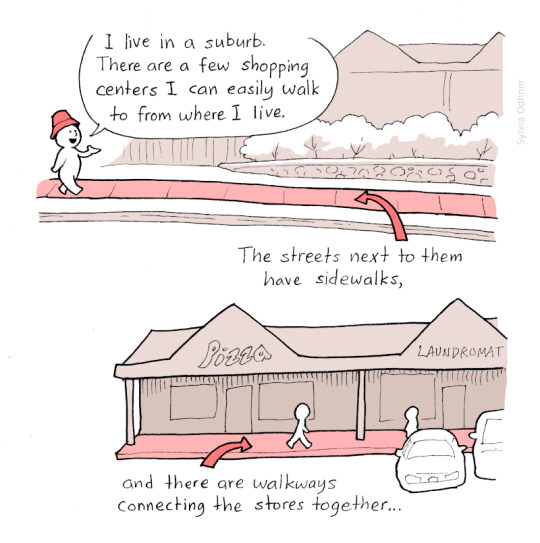
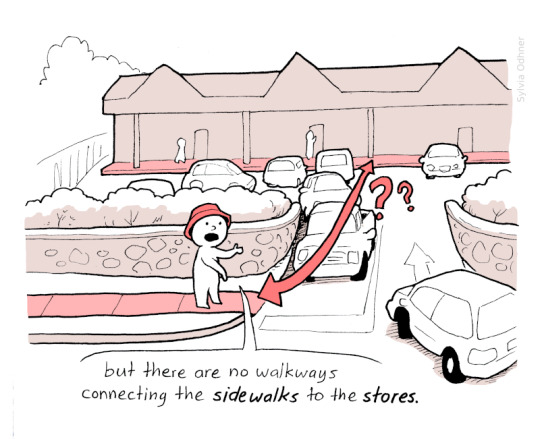

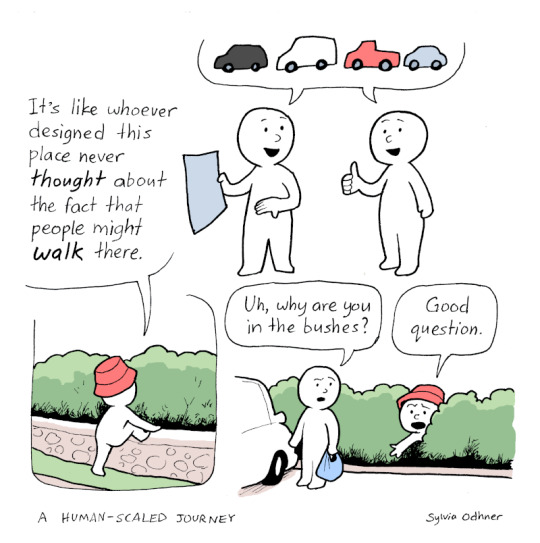
The Shopping Center Disconnect
42K notes
·
View notes
Text
Even the thrift shops are filled with fast fashion now

9K notes
·
View notes
Text
Genocide experts warn that India is about to genocide the Shompen people
Who are the Shompen?
The Shompen are an indigenous culture that lives in the Great Nicobar Island, which is nowadays owned by India. The Shompen and their ancestors are believed to have been living in this island for around 10,000 years. Like other tribes in the nearby islands, the Shompen are isolated from the rest of the world, as they chose to be left alone, with the exception of a few members who occasionally take part in exchanges with foreigners and go on quarantine before returning to their tribe. There are between 100 and 400 Shompen people, who are hunter-gatherers and nomadic agricultors and rely on their island's rainforest for survival.
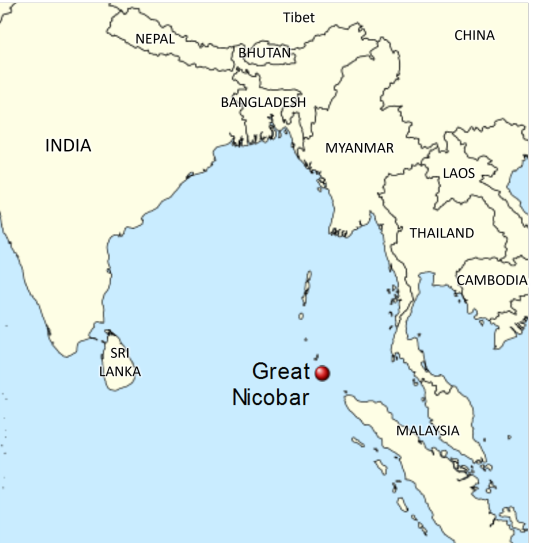
Why is there risk of genocide?
India has announced a huge construction mega-project that will completely change the Great Nicobar Island to turn it into "the Hong Kong of India".
Nowadays, the island has 8,500 inhabitants, and over 95% of its surface is made up of national parks, protected forests and tribal reserve areas. Much of the island is covered by the Great Nicobar Biosphere Reserve, described by UNESCO as covering “unique and threatened tropical evergreen forest ecosystems. It is home to very rich ecosystems, including 650 species of angiosperms, ferns, gymnosperms, and bryophytes, among others. In terms of fauna, there are over 1800 species, some of which are endemic to this area. It has one of the best-preserved tropical rain forests in the world.”
The Indian project aims to destroy this natural environment to create an international shipping terminal with the capacity to handle 14.2 million TEUs (unit of cargo capacity), an international airport that will handle a peak hour traffic of 4,000 passengers and that will be used as a joint civilian-military airport under the control of the Indian Navy, a gas and solar power plant, a military base, an industrial park, and townships aimed at bringing in tourism, including commercial, industrial and residential zones as well as other tourism-related activities.
This project means the destruction of the island's pristine rainforests, as it involves cutting down over 852,000 trees and endangers the local fauna such as leatherback turtles, saltwater crocodiles, Nicobar crab-eating macaque and migratory birds. The erosion resulting from deforestation will be huge in this highly-seismic area. Experts also warn about the effects that this project will have on local flora and fauna as a result of pollution from the terminal project, coastal surface runoff, ballasts from ships, physical collisions with ships, coastal construction, oil spills, etc.
The indigenous people are not only affected because their environment and food source will be destroyed. On top of this, the demographic change will be a catastrophe for them. After the creation of this project, the Great Nicobar Island -which now has 8,500 inhabitants- will receive a population of 650,000 settlers. Remember that the Shompen and Nicobarese people who live on this island are isolated, which means they do not have an immune system that can resist outsider illnesses. Academics believe they could die of disease if they come in contact with outsiders (think of the arrival of Europeans to the Americas after Christopher Columbus and the way that common European illnesses were lethal for indigenous Americans with no immunization against them).
And on top of all of this, the project might destroy the environment and the indigenous people just to turn out to be useless and sooner or later be abandoned. The naturalist Uday Mondal explains that “after all the destruction, the financial viability of the project remains questionable as all the construction material will have to be shipped to this remote island and it will have to compete with already well-established ports.” However, this project is important to India because they want to use the island as a military and commercial post to stop China's expansion in the region, since the Nicobar islands are located on one of the world's busiest sea routes.
Last year, 70 former government officials and ambassadors wrote to the Indian president saying the project would “virtually destroy the unique ecology of this island and the habitat of vulnerable tribal groups”. India's response has been to say that the indigenous tribes will be relocated "if needed", but that doesn't solve the problem. As a spokesperson for human rights group Survival International said: “The Shompen are nomadic and have clearly defined territories. Four of their semi-permanent settlements are set to be directly devastated by the project, along with their southern hunting and foraging territories. The Shompen will undoubtedly try to move away from the area destroyed, but there will be little space for them to go. To avoid a genocide, this deadly mega-project must be scrapped.”
On 7 February 2024, 39 scholars from 13 countries published an open letter to the Indian president warning that “If the project goes ahead, even in a limited form, we believe it will be a death sentence for the Shompen, tantamount to the international crime of genocide.”
How to help
The NGO Survival International has launched this campaign:
From this site, you just need to add your name and email and you will send an email to India's Tribal Affairs Minister and to the companies currently vying to build the first stage of the project.
Share it with your friends and acquittances and on social media.
Sources:
India’s plan for untouched Nicobar isles will be ‘death sentence’ for isolated tribe, 7 Feb 2024. The Guardian.
‘It will destroy them’: Indian mega-development could cause ‘genocide’ and ‘ecocide’, says charity, 8 Feb 2024. Geographical.
Genocide experts call on India's government to scrap the Great Nicobar mega-project, Feb 2024. Survival International.
The container terminal that could sink the Great Nicobar Island, 20 July 2022. Mongabay.
[Maps] Environmental path cleared for Great Nicobar mega project, 10 Oct 2022. Mongabay.
#shompen#genocide#stop genocide#india#indigenous#indigenous peoples#indigenous rights#human rights#anthropology#stateless nations#end occupation#andaman and nicobar islands#nicobar islands#great nicobar#💬#asia#geopolitics#ecocide#sustainability
23K notes
·
View notes
Text
Golf Courses ARE Being Converted
The Solarpunk "fantasy" that so many of us tout as a dream vision, converting golf courses into ecological wonderlands, is being implemented across the USA according to this NYT article!
The article covers courses in Michigan, Pennsylvania, California, Colorado, and New York that are being bought and turned into habitat and hiking trails.

The article goes more into detail about how sand traps are being turned into sand boxes for kids, endangered local species are being planted, rocks for owl habitat are being installed, and that as these courses become wilder, they are creating more areas for biodiversity to thrive.
Most of the courses in transition are being bought by Local Land Trusts. Apparently the supply of golf courses in the USA is way over the demand, and many have been shut down since the early 2000s. While many are bought up and paved over, land Trusts have been able to buy several and turn them into what the communities want: public areas for people and wildlife. It does make a point to say that not every hold course location lends itself well to habitat for animals (but that doesn't mean it wouldn't make great housing!)
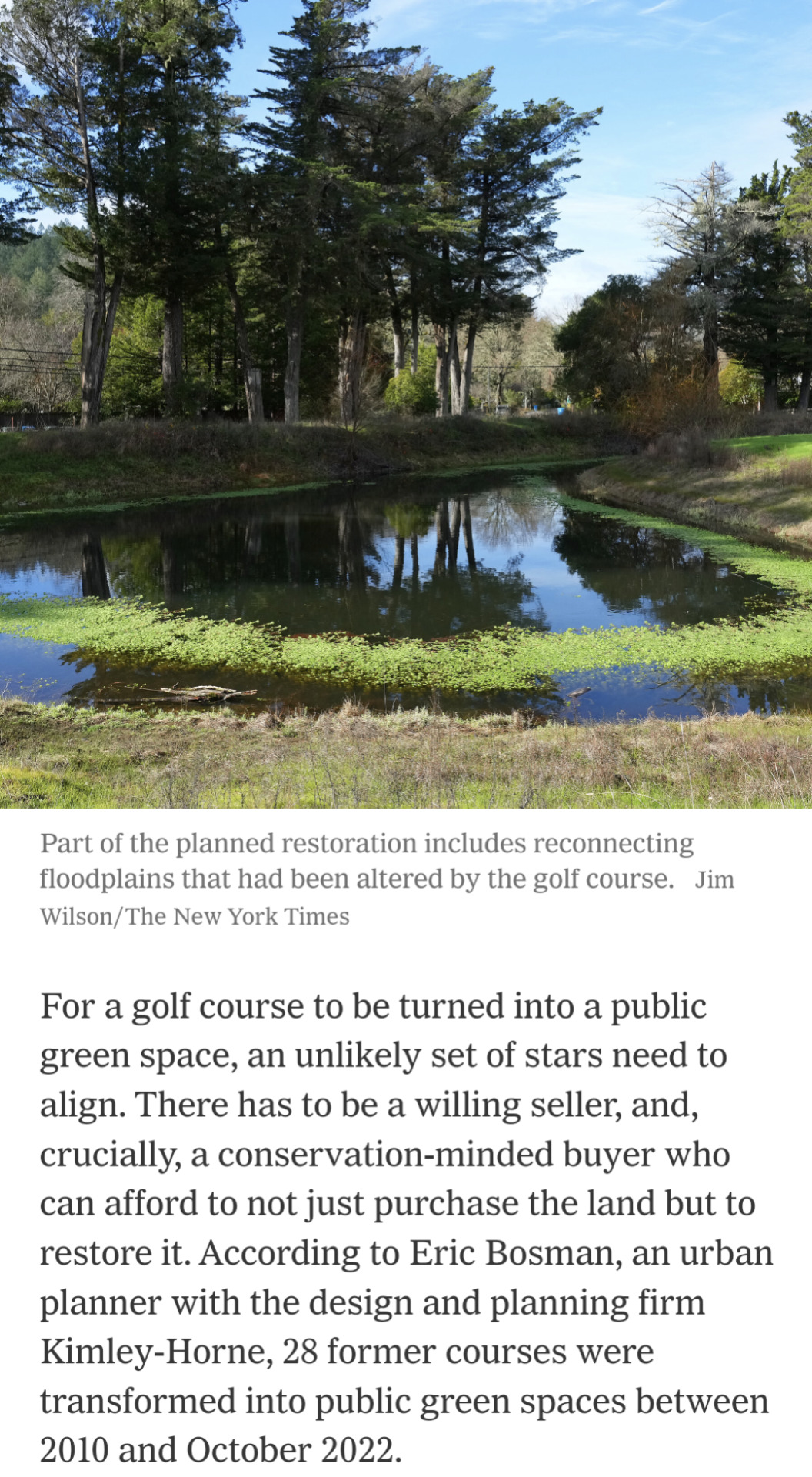
So lets be excited by the fact that people we don't even know about are working on the solutions we love to see! Turning a private space that needs thousands of gallons of water and fertilizer into an ecologically oriented public space is the future I want to see! I can say when I used to work in water conservation, we were getting a lot of clients that were golf courses that were interested in cutting their resource input, and they ended up planting a lot of natives! So even the golf courses that still operate could be making an effort.
So what I'd encourage you to do is see if there's any land or community trusts in your area, and see if you can get involved! Maybe even look into how to start one in your community! Through land trusts it's not always golf course conversions, but community gardens, solar fields, disaster adaptation, or low cost housing! (Here's a link to the first locator I found, but that doesn't mean if something isn't on here it doesn't exist in your area, do some digging!)
#solarpunk#sustainability#climate change#gardening#activism#hope#climate justice#news#new york times#golf courses#habitat#conservation
19K notes
·
View notes
Text
"A Scottish field once home to mono-crop barley has become a pollinator’s paradise after intervention from a local trust saw bumblebee numbers increase 100-fold.
Entitled Rewilding Denmarkfield, and run by the Bumblebee Conservation Trust, the project has also seen a sharp increase in the number of species passing through the rolling meadows after they were reclaimed by dozens of wildflower species.
The area north of Perth is about 90 acres in size, and surveys of bumblebees before the project began rarely recorded more than 50. But by 2023, just two years of letting “nature take the lead” that number has topped 4,000, with the number of different bee species doubling.
“This superb variety of plants attracts thousands of pollinators. Many of these plants, such as spear thistle and smooth hawk’s beard, are sometimes branded as ‘weeds��. But they are all native species that are benefiting native wildlife in different ways,” Ecologist Ellie Corsie, who has been managing the project since it began in 2021, said.
“Due to intensive arable farming, with decades of plowing, herbicide, and pesticide use, biodiversity was incredibly low when we started. Wildlife had largely been sanitized from the fields. Rewilding the site has had a remarkable benefit.”
Similar increases have been recorded in the populations of butterflies, with a tripling in the number of these insects seen on average during a ramble through the field.
The numbers of both insects are now so high that Rewilding Denmarkfield offers bee and butterfly safaris to visitors.
Local residents told the Scotsman that on spring and summer days, the field is awash with color, and hums with the sounds of bees and birds. Even as multiple housing developments expand around the Denmarkfield area, the field is a haven for wildlife."
-via Good News Network, December 2, 2024
#bees#bumblebee#save the bees#pollinators#conservation#sustainability#hope posting#insects#entomology#rewilding#scotland#europe#good news#hope
6K notes
·
View notes
Text
There are two configurations available: one with 6GB of RAM and 128GB of storage for $599 and another with 8GB of RAM and 256GB of storage for $679. The storage of both models can be expanded via microSD, and the phone features a modular design that can be easily disassembled using a standard Phillips #00 screwdriver to replace broken components. It also has an IP54 rating, meaning the device is protected against dust and water sprays.
The Murena Fairphone 4 will ship to US customers with 5G and dual SIM support, a removable 3905mAh battery, a 48-megapixel main camera, a 48-megapixel ultrawide, and a 25-megapixel selfie camera. The phones will be available to order exclusively from Murena’s webstore starting today.
25K notes
·
View notes
Text
for those who would like to support Palestinian olive farmers, equal exchange has Palestine-sourced olive oil! they're an amazing worker owned co-op that works closely with local farmers to support sustainability and pay fair wages.
i frankly cannot afford it, but i know some folks can and would like to get some. it comes in packs of 6 bottles, so if you can get 6 friends together, each person can pay for one bottle!
they also have some of the most delicious coffee and hot cocoa mixes that i've ever gotten, and the same approach applies. given how horrific farming and labor practices are in both of those industries, i highly recommend supporting them and getting some amazing products in return if you can afford it.
16K notes
·
View notes
Text
This is What the World's First All-EV Car Market Looks Like

Image and text from this Bloomberg article:
In Norway, Toyota Motor Corp. is going from one electric-powered model to five to better compete with Tesla Inc., fuel stations are ripping out pumps to make space for chargers, and even nursing homes in the rural interior have switched to battery-powered cars despite months of arctic cold. All are signs of the dramatic shift that has put the Nordic country on the cusp of becoming the first market in the world to all but eliminate sales of new combustion-powered cars. “It’s cold here, there are mountains, long distances to drive,” Yngve Slyngstad, the former head of Norway’s $1.8 trillion sovereign wealth fund, said on the way to his electric car in downtown Oslo. “There are so many reasons EVs shouldn’t have been a success here, and yet we’ve done it.” It’s a transition that happened with remarkable speed. While there have long been incentives to encourage EV purchases — mainly to promote short-lived domestic upstarts — adoption only started to accelerate in recent years, as a greater variety of cars became available. Once an inflection point was reached, the ramp-up was rapid.
#EV#Electric vehicles#sustainability#sustainable vehicles#electric revolution#EV revolution#fossil fuels#climate change#global warming#climate anxiety#hope#good news#environment#ecoanxiety
103 notes
·
View notes
Text
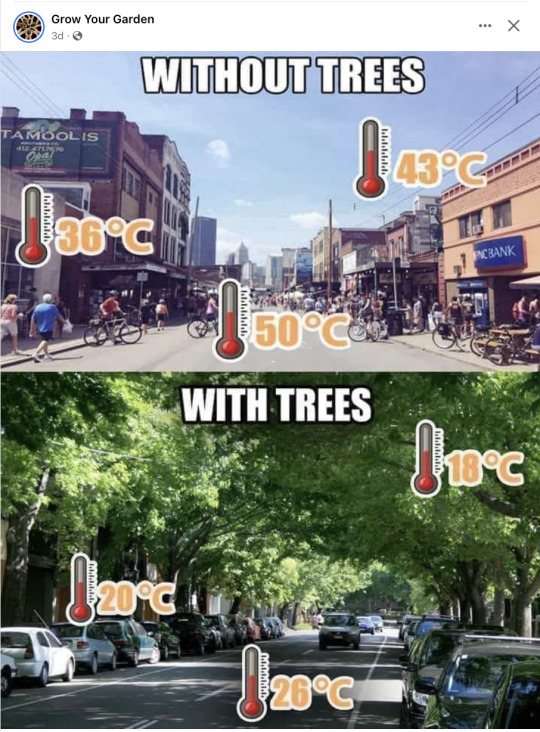
“It is not so much for its beauty that the forest makes a claim upon men’s hearts, as for that subtle something, that quality of air that emanation from old trees, that so wonderfully changes and renews a weary spirit.”
― Robert Louis Stevenson
Source: Grow Your Garden Instagram page
#katia plant scientist#botany#plant biology#plant science#plants#trees#plants make people happy#sustainability#ecological#solarpunk#intersectional environmentalism#environmentalism
28K notes
·
View notes